Your garden hose can get damaged if you leave it outside during cold winter.
It happens when the water inside the hose freezes and weakens the hose material by expanding.
A frozen garden hose connected to an outdoor spigot can also increase pressure throughout your water lines, affecting the water pressure inside your house.
That’s why it’s important to winterize your hose before the winter starts. In this article, we’ll discuss some effective methods that will help you keep a garden hose from freezing.
Store Away the Garden Hose
Even if you’re using a high-quality garden hose, such as Flexi Expandable Hose, it’ll freeze in sub-zero temperatures and can get damaged beyond repair.
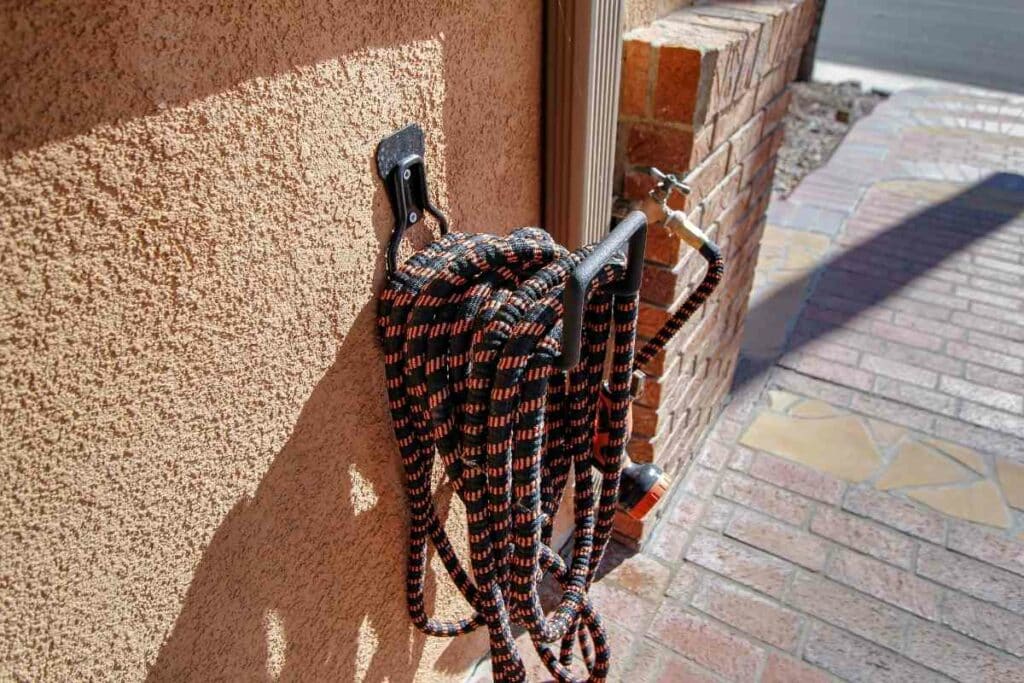
To prevent this problem from occurring, you’ll need to store your hose in a warm and dry place.
You can use the steps listed below to complete this method.
Step 1: Shut Off Water Supply
The first step is to shut off the water supply to your outdoor faucet that you use for your garden hose.
Most outdoor faucets have a separate valve, located inside the house, to shut off the water supply.
After That – Turn the outdoor faucet on to let the remaining water run through the hose out of the water pipe.
Step 2: Disconnect and Drain the Hose
Disconnect your garden hose from the outdoor spigot so that it doesn’t receive any more water.
Now remove any equipment connected to the hose, such as a sprayer nozzle, automatic timer, and sprinkler head.
You want to make sure that you drain the hose thoroughly to make it water free. You’ll need to straighten out if the hose has any kinks so that the water can flow freely.
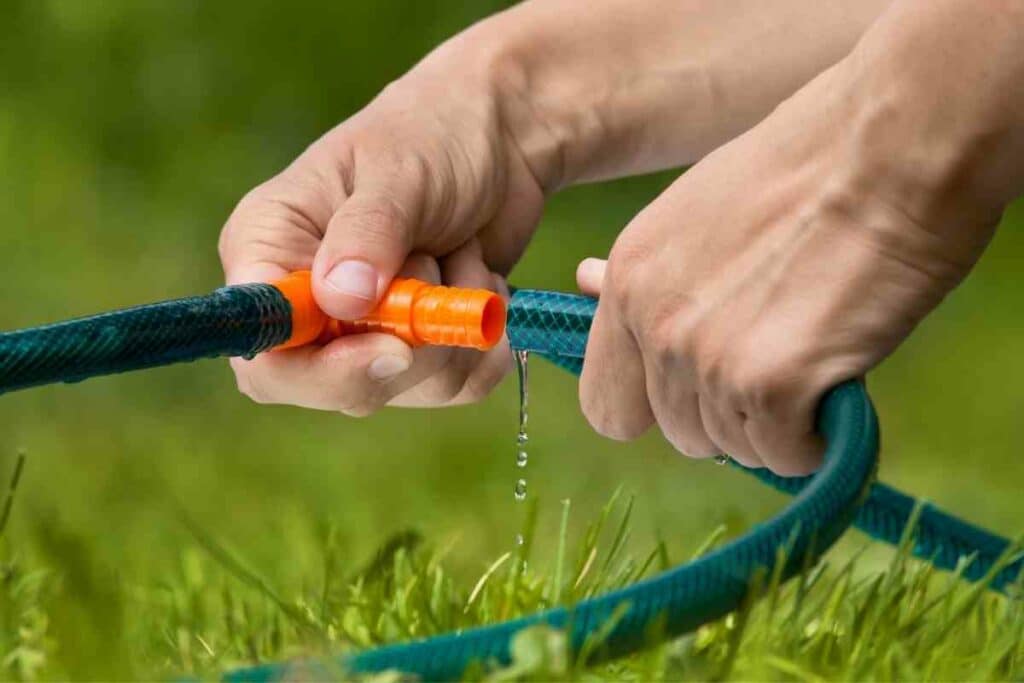
Walk through the entire length of the hose and lift every section to remove water trapped inside. You can make this process easy by draping your garden hose over something tall.
Remove water from the attachments and dry them thoroughly before storing them for the winter.
Step 3: Coil and Secure the Garden Hose
After removing water from the garden hose, start coiling it by making loops of about two to three feet in diameter.
Any smaller diameter can damage the hose even if you have stored it in a warm location.
Additionally – You’ll also need to make sure that the hose isn’t kinked or pinched. Once you have coiled the entire hose, use a tie wrap or a string to secure it properly.
It’s also important to screw together the two ends to keep the inside clean.
Step 4: Store the Garden Hose
Now, store your garden hose in a warm location to prevent it from cracking or freezing.
Make sure that you place it inside your storage closet or basement if your garage or shed is too cold.
Step 5: Cover the Outdoor Faucet
Once you have stored your garden hose in a warm and dry spot, go back to your outdoor faucet and cover it properly.
You’ll need to use an insulated cover for this purpose.
You can easily buy an affordable Styrofoam faucet cover from a local hardware store. It’ll keep your faucets covered and isolated from the harsh winter elements.
Performing this little step can save you from expensive water pipe damage.
Methods to Prevent Garden Hose from Freezing Outside
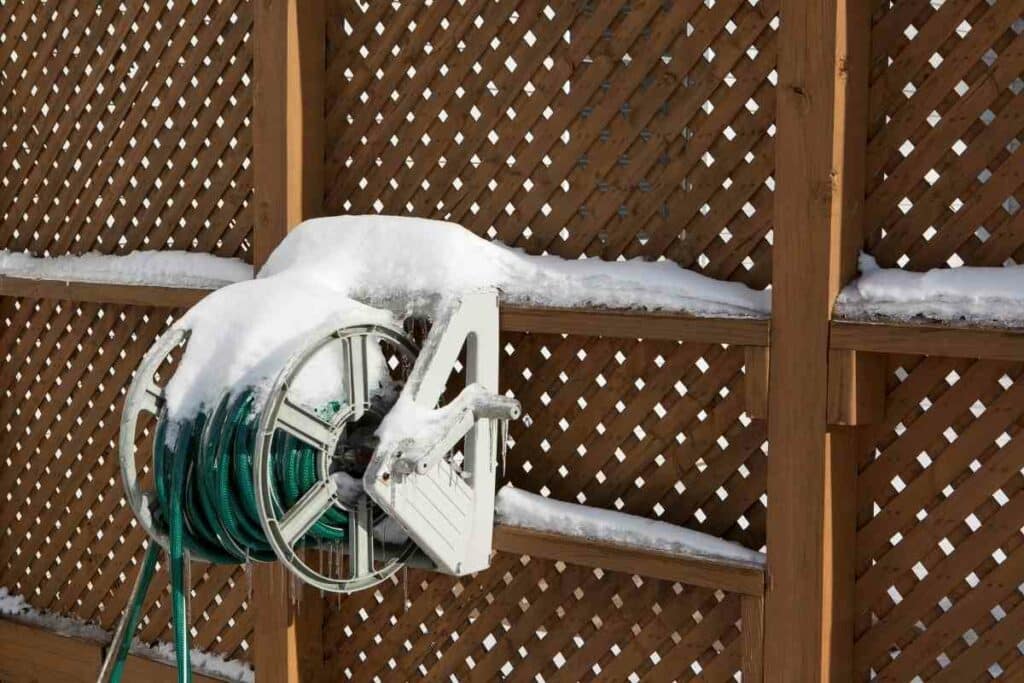
If you need to use your garden hose in winter, consider using any of the following methods to keep it from freezing.
Insulate the Garden Hose
Insulating the garden hose is a popular and effective method to keep it ice-free during cold weather.
You’ll need to wrap the hose in some sort of insulation, such as insulation tape, for this purpose.
Key Takeaway – It’ll allow the water inside to retain heat and help it pass through the hose without freezing.
However, the water will still get frozen inside if you leave the garden hose outside for a long period of time.
So, you’ll need to take the water hose inside your house after using it to prevent it from freezing.
Wrap the insulation tape around the hose tightly and leave no gaps from where the air can enter.
Consider using foam insulation tape instead of cotton pipe insulation because it’s flexible and doesn’t become waterlogged.
It allows you to use the hose easily once you have insulated it.
Use Heat Cable
Using a heat cable is another great way to prevent a garden hose from freezing.
You’ll need to run a heat cable along the length of your hose and secure it using high-temp tape.
After that, you’ll need to connect one end of the cable to a wall outlet and it’ll keep the hose water warm.
While it’s an expensive solution, it’ll keep your hose from freezing and allow you to use it in winters.
Use a Heated Hose
The easiest and most effective way to prevent a garden hose from freezing is to use a heated hose.
There are products available in the market that can keep water from freezing even in temperatures down to -40 degrees Fahrenheit.
These garden hoses have a built-in heat cable that you need to connect to the wall outlet.
They’re practical, durable, and easy to set up, and some of them even come with drinking water-safe ratings.
Should You Use Frost Free Outdoor Faucet?
If you’re planning to store your garden hose for the winter, then you won’t need to use a frost-free outdoor faucet.
You’ll only need to cover your existing faucet using a faucet cover to protect it from snow and cold weather.
However, you’ll need to use a frost-free faucet if you’re planning to use your garden hose in winter.
While using a heat cable, insulation tape, or heated hose will protect your garden hose, it won’t prevent water in your outdoor faucet from freezing.
Therefore, you’ll need to call a professional plumber and get your ordinary outdoor faucet replaced with a frost-free one.
These invaluable faucets are specially designed to withstand and work optimally in freezing temperatures.
How Do You Thaw a Frozen Garden Hose?
If your garden hose has become frozen, then use the steps listed below to thaw it safely.
Step 1: Shut Off the Water Supply
Shut off the water supply for your frozen garden hose by turning the outdoor faucet knob clockwise.
After that, detach the hose from the faucet carefully and gently place it on the ground.
Step 2: Inspect the Hose
The second step is to determine the part of your garden hose that’s frozen.
Start squeezing the hose gently using your hand from one end until you come across an area that feels hard and cold and doesn’t bend back.
It’s the frozen patch that you need to thaw.
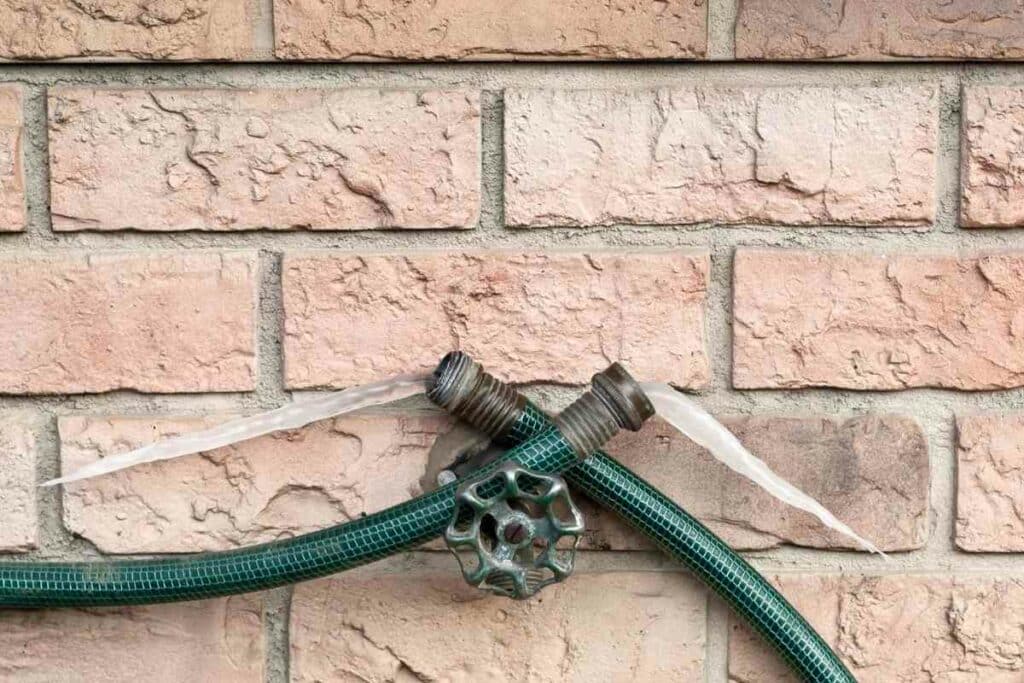
Step 3: Start the Thawing Process
Grab a hair dryer and plug it into the nearest wall outlet.
Set it to low to medium settings and turn it on. Make sure that you keep the hair dryer at least three inches away from the hose.
Works Fine – Start moving the hair dryer up and down and back and forth across the frozen patch to melt it. Use the same technique to melt the rest of the frozen patches.
Step 4: Drain the Hose
Once all the frozen parts are melted, drain the garden hose thoroughly to prevent it from refreezing.
After that, coil it by making loops, and store the hose in a warm and dry place.
It can be a time-consuming method and can take up to an hour, depending on the length of your hose and how much-frozen water it has.
However, it’s a safe method that will help you keep your garden hose from getting damaged permanently.
At What Temperature Does a Garden Hose Freeze?
Your garden hose will start freezing any time the temperature drops down to 32 degrees Fahrenheit, which is the freezing point of water.
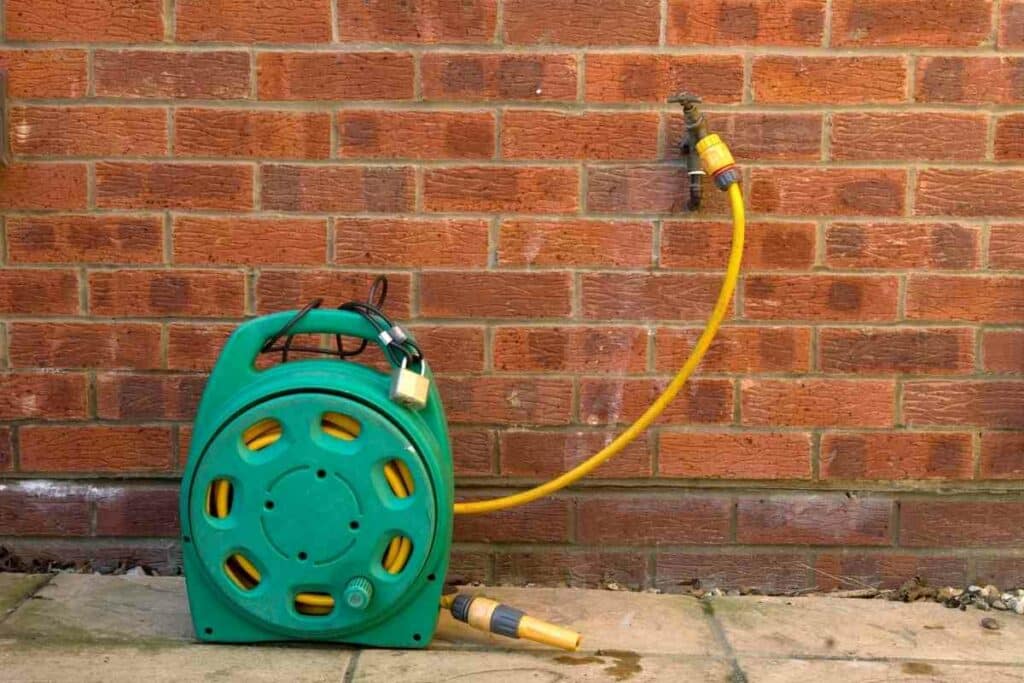
It’s important to note that water in pipes, installed inside walls, can remain in the liquid form at a much lower temperature.
Keep In Mind – You won’t need to worry about the water freezing inside wall pipes until the outside temperature reaches 20 degrees Fahrenheit.
That’s because walls work as an insulation layer to keep the water warm.
Whereas, your garden hose doesn’t have any insulation layer. It can freeze even if it remains exposed to below-freezing temperatures just for a few hours.
Therefore, you must never leave your garden hose in sub-zero temperatures. Consider using any of the methods discussed in this guide to keep it from freezing.
Final Words
A garden hose is a valuable backyard tool that provides you with a moveable water source for lawn care, gardening, and other landscaping purposes.
You shouldn’t leave your hose outdoors in winter as it can freeze and get damaged permanently.
We hope this guide will help you understand the right way to protect a hose by keeping it from freezing.
Don’t forget to use the method discussed above to thaw your hose if it has become frozen already.
It’ll allow you to melt ice and remove water from your hose efficiently without damaging it.
